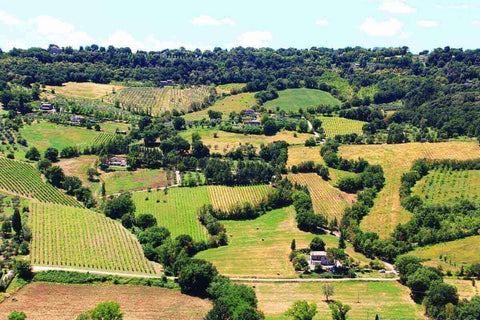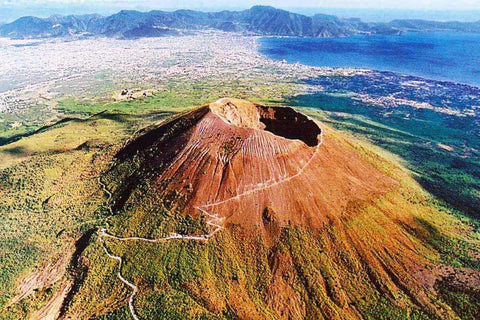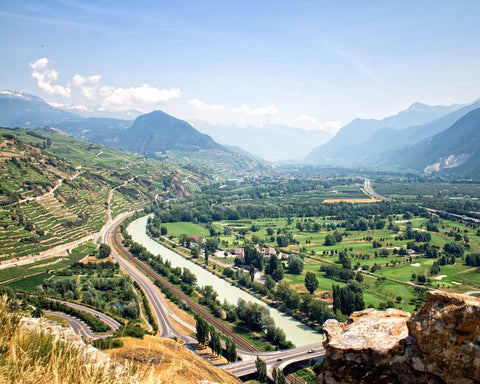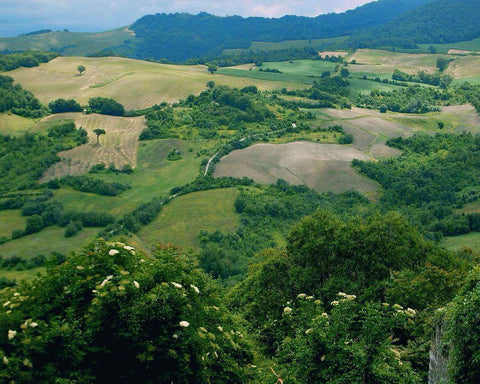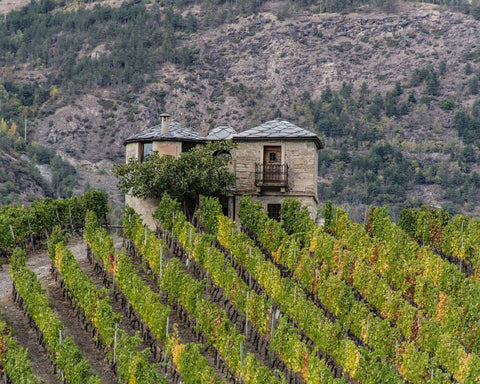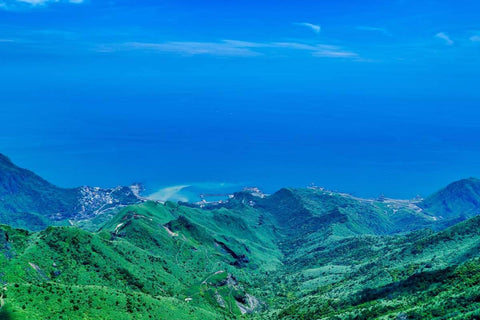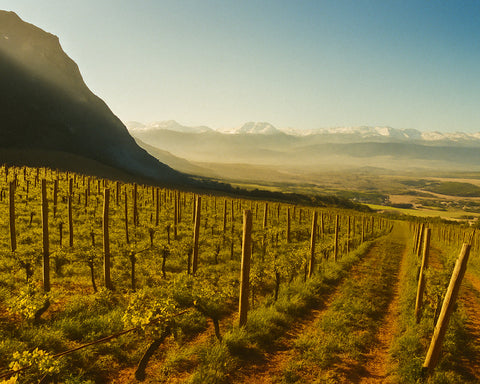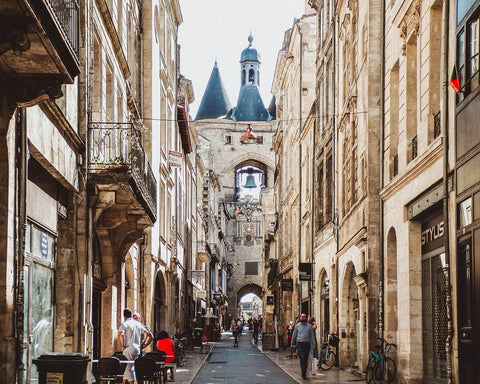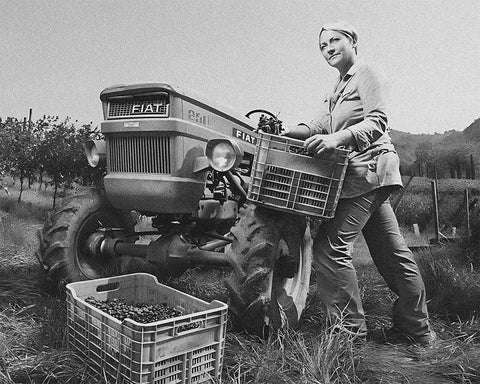Umbria, often called the "Green Heart of Italy," stands as one of the country's most picturesque and historically rich regions. Nestled in central Italy, this landlocked region is renowned for its rolling hills, medieval hill towns, and lush landscapes, producing wines that embody tradition and quality.
Over the centuries, Umbria has emerged as a haven for organic and natural wine cultivation, focusing on sustainable practices that respect the environment and enhance the natural balance of its terroir.
The wines from Umbria are not just beverages; they encapsulate the region's deep history, dedication to excellence, and unwavering commitment to vinicultural perfection, particularly evident in its celebrated Sagrantino and Orvieto wines.
Table of Contents
History of Umbria
Umbria, bordered by Tuscany, Lazio, and Marche, has a rich history spanning the ancient Etruscans and Romans to the medieval and Renaissance periods. Its strategic location in central Italy has made it a crossroads of cultures and civilizations.
During the Roman era, Umbria was a vital part of the empire, with cities like Perugia and Spoleto flourishing as centers of commerce and culture. The Romans introduced advanced agricultural techniques, including viticulture, which laid the groundwork for the region's future as a significant wine-producing area.
In the Middle Ages, Umbria's hill towns became strongholds of power and art. The region saw the rise of influential families and religious orders, contributing to its cultural and architectural heritage. The medieval period also witnessed the establishment of monasteries and convents crucial in preserving and advancing viticultural practices.
The Renaissance brought further development to Umbria, with cities like Perugia becoming centers of learning and art. The region's wines began to gain recognition, and viticulture continued to thrive, supported by the fertile land and favorable climate.
Terroir of Umbria
The terroir of Umbria is characterized by its diverse landscape, which includes rolling hills, fertile valleys, and limestone-rich mountains. The region enjoys a Mediterranean climate with continental influences, providing ideal conditions for a variety of grape varieties.
The soils of Umbria are varied, ranging from clay and sand in the valleys to limestone and marl in the hills, contributing to the distinct characteristics of the region's wines. This diversity in terrain and climate allows Umbria to produce a wide array of high-quality wines, each reflecting the unique attributes of their growing environment.
The Geology of Umbria
Umbria's landscape predominantly comprises rolling hills and mountains, with elevations ranging from 200 to 500 meters above sea level. The region is divided into several sub-regions, each with distinct geological features that influence the character of the wines produced.
- Montefalco: Known for its clay and limestone soils, ideal for cultivating Sagrantino.
- Orvieto: Characterized by volcanic and tuff soils, perfect for producing crisp white wines.
- Torgiano: With its mix of clay and sandy soils, this area is renowned for its balanced red and white wines.
The geological diversity of Umbria ensures that each wine expresses the unique characteristics of its terroir, enhancing the complexity and depth of the region's wines.
Climate and Its Influence
Umbria's climate is Mediterranean with continental influences, characterized by hot summers and cold winters, with significant temperature variation between day and night. This diurnal range is crucial for developing grape sugars and acids, contributing to the balanced flavor profile of the wines.
The region's microclimates, influenced by its varied topography and proximity to bodies of water, further contribute to the distinctiveness of Umbrian wines and agricultural products.
The Grapes of Umbria
Umbria boasts several indigenous and international grape varieties, each adapted to the region's unique terroir. The most notable are Sagrantino, Grechetto, and Trebbiano Spoletino.
Red Grape Varietals
- Sagrantino: The cornerstone of Umbria's most celebrated red wines, known for its deep color, high tannins, and excellent aging potential.
- Sangiovese: Widely planted and known for its versatility and bright acidity.
- Canaiolo: Often used in blends, known for its soft tannins and fruity flavors.
- Merlot: Produces rich and smooth red wines, often blended with local varieties.
White Grape Varietals
- Grechetto: The signature white grape of Umbria, known for its fresh acidity and aromatic intensity.
- Trebbiano Spoletino: Produces aromatic and crisp white wines with a good balance of acidity.
- Verdello: Known for its light and fresh wines, often used in blends.
- Chardonnay: A versatile grape that can produce both crisp and full-bodied wines.
Top Wines of Umbria
Sagrantino di Montefalco: Known for its deep color, complex aromas, and excellent aging potential, Sagrantino di Montefalco is a testament to Umbria's vinicultural prowess. Made from the Sagrantino grape, these wines are characterized by their high tannins, rich flavors, and long finish.
Orvieto: This crisp and refreshing white wine is made from a blend of Grechetto, Trebbiano, and other local varieties. Orvieto is known for its fresh acidity, floral aromas, and subtle mineral notes, making it a perfect pairing for a variety of dishes.
Other Notable Wines: Umbria is also home to a variety of other notable wines, including Torgiano Rosso Riserva, known for its balanced and elegant profile, and Colli Martani Grechetto, celebrated for its aromatic and crisp character. The region's diverse terroir allows for a wide range of wine styles, each offering a unique expression of Umbria's character.
Cuisine and Typical Products of Umbria
Umbria's culinary landscape is as diverse and rich as its history. The region is known for its hearty and flavorful dishes, with a strong emphasis on local and seasonal ingredients. Umbria's cuisine reflects the simplicity and authenticity of its rural traditions, creating a unique and vibrant culinary identity.
Using legumes, grains, and high-quality meats is a hallmark of Umbrian cuisine. Other staples include truffles, olive oil, and wild game, reflecting the region's agricultural abundance and natural environment.
Umbria is also famous for its cured meats and cheeses, which are integral to the local diet and culinary identity. From the savory Norcia prosciutto to the rich pecorino cheese, these products showcase the region's dedication to artisanal food production.
Umbrian Antipasti
In Umbria, a meal often begins with a selection of antipasti, featuring local cheeses, cured meats, and marinated vegetables. These appetizers set the stage for the hearty courses to follow.
- Bruschetta al Tartufo: Toasted bread topped with truffle paste, showcasing Umbria's prized black truffles.
- Norcia prosciutto: A dry-cured ham from Norcia, known for its delicate flavor and melt-in-the-mouth texture.
- Frittata di erbe: An herb omelet made with wild greens and fresh eggs.
- Capocollo: Cured pork neck with a rich and savory flavor, often served thinly sliced.
Umbrian Primi Piatti (First Courses)
The first course in an Umbrian meal often features pasta, legumes, or hearty soups. These dishes showcase the region's grains, beans, and seasonal vegetables.
- Strangozzi al Tartufo: A local pasta dish served with a rich truffle sauce.
- Zuppa di farro: A hearty soup made with spelt, vegetables, and sometimes sausage.
- Pappardelle al cinghiale: Wide ribbon pasta with a savory wild boar ragù.
- Rivoltini di pesce: Fish rolls stuffed with breadcrumbs , garlic, and herbs, often served in a tomato sauce.
Umbrian Secondi (Second Courses)
Umbria is known for its high-quality meats, particularly game and pork. The second course often highlights these prized ingredients, prepared with local herbs and spices.
- Porchetta: A whole roasted pig stuffed with garlic, rosemary, and fennel, a traditional festive dish.
- Coniglio alla cacciatora: Rabbit cooked in a flavorful tomato and herb sauce.
- Agnello scottadito: Grilled lamb chops seasoned with garlic and rosemary.
- Faraona alla leccarda: Guinea fowl cooked with a rich sauce made from its juices and liver.
Umbrian Contorni (Side Dishes)
Umbrian cuisine features a variety of vegetable side dishes, highlighting the region's agricultural bounty.
- Fagioli all'uccelletto: Beans stewed with tomatoes, garlic, and sage.
- Cicoria ripassata: Sautéed chicory with garlic and olive oil, often served as a bitter green side dish.
- Patate al forno: Oven-roasted potatoes seasoned with rosemary and olive oil.
Umbrian Formaggi (Cheeses)
Umbria produces a range of delicious cheeses, often enjoyed as part of a cheese course or used in cooking.
- Pecorino di Norcia: A sheep's milk cheese known for its robust and slightly spicy flavor.
- Ricotta salata: Salted ricotta cheese used in salads and pasta dishes.
- Caciotta: A mild and semi-soft cheese made from cow's or sheep's milk.
Umbrian Dolci (Desserts)
Umbrian desserts often feature local ingredients such as nuts, honey, and seasonal fruits.
- Panpepato: A spiced fruitcake with nuts, honey, and chocolate, traditionally enjoyed during the holidays.
- Tozzetti: Crunchy almond cookies often served with dessert wine.
- Crostata di marmellata: A jam tart made with local fruit preserves.
- Torcolo di San Costanzo: A ring-shaped cake flavored with anise and candied fruit, often enjoyed during festivities.
Typical Products of Umbria
Umbria's cuisine is based on high-quality local products, many of which have achieved protected status, ensuring authenticity and traditional production methods.
Truffles
Umbria is famous for its black truffles, particularly those from Norcia. These prized fungi are used in various dishes, from pasta to meats, adding a unique and luxurious flavor.
Olive Oil
Umbria produces some of Italy's finest extra virgin olive oil, characterized by its fruity and slightly peppery flavor. The region's olive groves benefit from the ideal climate and terrain, producing high-quality oil.
Meat and Charcuterie
Umbria's meat products are known for their quality and distinctive flavors.
- Prosciutto di Norcia: A dry-cured ham from Norcia, celebrated for its delicate flavor and melt-in-the-mouth texture.
- Capocollo: Cured pork neck with a rich and savory flavor, often served thinly sliced.
- Porchetta: A whole roasted pig stuffed with garlic, rosemary, and fennel, a traditional festive dish.
Legumes: A Staple of Umbrian Cuisine
Legumes are a staple in Umbrian cuisine, reflecting the region's agricultural heritage.
- Lentils from Castelluccio: Small, delicate lentils known for their flavor and texture, often used in soups and stews.
- Fagiolina del Trasimeno: A rare and ancient variety of small bean, prized for its delicate flavor and creamy texture.
- Roveja: A wild pea traditionally grown in the region, used in soups and stews.
